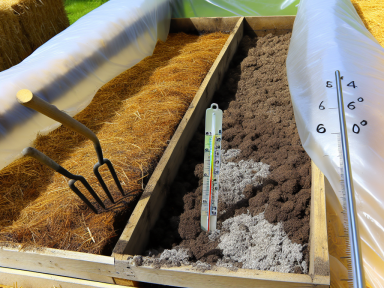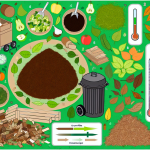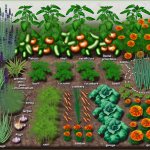Understanding Hot Beds: The Hidden Gem of Early Gardening
Building and using a hot bed can significantly extend your growing season, allowing you to start seedlings weeks before you could in a traditional garden. Let’s delve into the specifics of constructing and effectively utilizing this traditional horticultural technique.
What is a Hot Bed?
A hot bed is essentially a garden bed with a built-in heating system. The heat is typically generated through the natural process of decomposition of organic materials like manure and straw. This method has been used for centuries to jumpstart plant growth during the cooler months.
Materials You’ll Need
- Fresh manure (horse manure is ideal because it heats up well)
- Straw or old hay
- Wooden frame (untreated wood to avoid chemicals)
- Windows or clear plastic sheeting
- Shovel and garden fork
Step-by-Step Guide to Building a Hot Bed
- Select the Site: Choose a location that receives plenty of sunlight, as this will help maintain the warmth inside the hot bed.
- Build the Frame: Construct a wooden frame. The optimal size is about 3 to 6 feet wide so that you can easily reach across it. The depth should be approximately 1.5 to 2 feet.
- Layer the Manure: Start by adding a layer of fresh manure mixed with straw. The layer should be about 1 to 2 feet thick. This is the fuel for your hot bed, providing both heat and nutrients.
- Water and Turn: Thoroughly water the manure layer, then use a garden fork to turn it over. This helps activate the decomposition process, crucial for generating heat.
- Cover with Soil: After watering and turning the manure, add a layer of garden soil about 6 inches thick. This is where your seeds and seedlings will go.
- Cover the Frame: Finally, cover the wooden frame with windows or clear plastic sheeting to maintain the heat. Ensure there’s adequate ventilation to prevent overheating.
Using Your Hot Bed
Once built, a hot bed can maintain temperatures of 70-80°F, even when outdoor temperatures are significantly lower. Here’s how to make the most out of your hot bed:
- Monitoring: Check the temperature regularly using a soil thermometer. If temperatures climb above 85°F, a little ventilation will help bring the temperature down.
- Sowing Seeds: Directly sow seeds into the soil layer. Be mindful of the temperature requirements of each plant. Cool-season crops like lettuces and spinach are perfect for hot beds.
- Watering: Keep the soil consistently moist but not waterlogged. The heat from the decomposing manure will evaporate moisture faster than ambient conditions might.
- Ventilation: On sunny days, open the cover slightly to allow excess heat and moisture to escape. Close it again in the evening to trap warmth.
Maintenance Tips
Maintaining a hot bed requires a bit of effort but is well worth it:
- Turn the manure occasionally to ensure even decomposition.
- Add fresh manure if the heat levels begin to drop significantly.
- Insulate the sides of your hot bed with straw bales if additional warmth is needed.
By following these steps, you can harness the power of organic decomposition to create an optimal growing environment even in the chilliest months. A hot bed not only extends your growing season but also provides rich compost that will enrich your garden soil for future use.




GIPHY App Key not set. Please check settings